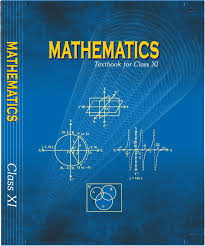Class 11 - Mathematics
Bonomial Theorem - Exercise 8.1

Top Block 1
Question 1:
Expand the expression (1– 2x)5
Answer:
By using Binomial Theorem, the expression (1– 2x)5 can be expanded as
(1– 2x)5 = 5C0 (1)5 – 5C1 (1)4 (2x) + 5C2 (1)3 (2x)2 – 5C4 (1)1 (2x)4 + 5C5 (2x)5
= 1 – 5(2x) + 10(4x2) – 10(8x3) + 5(16x4) – 32x5
= 1 – 10x + 40x2 – 80x3 + 80x4 – 32x5
Question 2:
Expand the expression (2/x – x/2)5
Answer:
By using Binomial Theorem, the expression (2/x – x/2)5 can be expanded as
(2/x– x/2)5 = 5C0 (2/x)5 – 5C1 (2/x)4 (x/2) + 5C2 (2/x)3 (x/2)2 – 5C4 (2/x)1 (x/2)4 + 5C5 (x/2)5
= 32/x5 – 5(16/x4)(x/2) + 10(8/x3)(x2/4) – 10(4/x2)(x3/8) + 5(2/x)(x4/16) – x5/32
= 32/x5 – 40/x3 + 20/x – 5x + 5x3/8 – x5/32
Question 3:
Expand the expression (2x – 3)6
Answer:
By using Binomial Theorem, the expression can be expanded as
(2x – 3)6 = 6C0 (2x)6 – 6C1 (2x)5 (3) + 6C2 (2x)4 (3)2 – 6C3 (2x)3 (3)2 + 6C4 (2x)2 (3)4 – 6C5 (2x)1 (3)5 +
6C6 (3)6
= 64x6 – 6(32x5)* 3 + 15(16x4) * 9 – 20(8x3) * 27 + 15(4x2) * 81 – 6 * 2x * 243 + 729
= 64x6 – 576x5 + 2160x4 – 4320x3 + 4860x2 – 2916x + 729
Question 4:
Expand the expression (x/3 + 1/x)5
Answer:
By using Binomial Theorem, the expression (2/x – x/2)5 can be expanded as
(x/3 + 1/x)5 = 5C0 (x/3)5 + 5C1 (x/3)4 (1/x) + 5C2 (x/3)3 (1/x)2 + 5C4 (x/3)1 (1/x)4 + 5C5 (1/x)5
= x5/343 + 5(x4/81)(1/x) + 10(x3/27)(1/x2) + 10(x2/9)(1/x3) + 5(x/3)(1/x4) + 1/x5
= x5/343 + 5x3/81 + 10x/27 +10/9x + 5/3x3 + 1/x5
Question 5:
Expand the expression (2/x – x/2)5
Answer:
By using Binomial Theorem, the expression (x + 1/x)6 can be expanded as
(x + 1/x)6 = 6C0 (x)6 + 6C1 (x)5 (1/x) + 6C2 (x)4 (1/x)2 + 6C3 (x)3 (1/x)4 + 6C4 (x)2 (1/x)4 + 6C5 (x) (1/x)5
+ 6C6 (1/x)6
= x6 + 6(x)5(1/x) + 14(x)4(1/x2) + 20(x)3(1/x3) + 15(x)2(1/x4) + 6(x)(1/x5) + 1/x6
= x6 + 6x4 + 15x2 + 20 + 15/x2 + 6/x4 + 1/x6
Question 6:
Using Binomial Theorem, evaluate (96)3
Answer:
96 can be expressed as the sum or difference of two numbers whose powers are easier to
calculate and then, binomial theorem can be applied.
It can be written that, 96 = 100 – 4
Now, (96)3 = (100 – 4)3
= 3C0 (100)3 – 3C1 (100)2 (4) + 3C2 (100)(4)2 – 3C3 (4)3
= (100)3 – 3(100)2 (4) + 3(100)(4)2 – (4)3
= 1000000 – 120000 + 4800 – 64
= 884736
Question 7:
Using Binomial Theorem, evaluate (102)5
Answer:
102 can be expressed as the sum or difference of two numbers whose powers are easier
to calculate and then, Binomial Theorem can be applied.
It can be written that, 102 = 100 + 2
Now, (102)5 = (100 + 2)5
= 5C0 (100)5 + 5C1 (100)4 (2) + 5C2 (100)3(2)2 + 5C3 (100)2 (2)3 + 5C4 (100)(2)4 + 5C5 (2)5
= (100)5 + 5(100)4 (2) + 10(100)3(2)2 + 10(100)2(2)3 + 5(100)(2)4 + (2)5
= 10000000000 + 1000000000 + 40000000 + 800000 + 8000 + 32
= 11040808032
Question 8:
Using Binomial Theorem, evaluate (101)4
Answer:
101 can be expressed as the sum or difference of two numbers whose powers are easier
to calculate and then, Binomial Theorem can be applied.
It can be written that, 101 = 100 + 1
Now, (101)4 = (100 + 1)4
= 4C0 (100)4 + 4C1 (100)3 (1) + 4C2 (100)2(1)2 + 4C3 (100) (1)3 + 4C4 (1)4
= (100)4 + 4(100)3 + 6(100)2 + 4(100) + 1
= 100000000 + 4000000 + 60000 + 400 + 1
= 104060401
Question 9:
Using Binomial Theorem, evaluate (99)5
Answer:
99 can be written as the sum or difference of two numbers whose powers are easier to
calculate and then, Binomial Theorem can be applied.
It can be written that, 99 = 100 – 1
Now, (99)5 = (100 – 1)5
= 5C0 (100)5 – 5C1 (100)4 (1) + 5C2 (100)3(1)2 – 5C3(100)2 (1)3 + 5C4 (100)(1)4 – 5C5 (1)5
= (100)5 – 5(100)4 + 10(100)3 – 10(100)2 + 5(100) – 1
= 10000000000 – 500000000 + 10000000 – 100000 + 500 – 1
= 9509900499
Mddle block 1
Question 10:
Using Binomial Theorem, indicate which number is larger (1.1)10000 or 1000.
Answer:
By splitting 1.1 and then applying Binomial Theorem, the first few terms of (1.1)10000 can be
obtained as
(1.1)10000 = (1 + 0.1)10000
= 10000C0 – 10000C1 (1.1) + other positive terms
= 1 + 10000 * 1.1 + other positive terms
= 1 + 11000 + other positive terms > 1000
Hence, (1.1)10000> 1000
Question 11:
Find (a + b)4 – (a – b)4. Hence, evaluate. (√3 + √2)4 – (√3 – √2)4
Answer:
Using Binomial Theorem, the expressions, (a + b)4 – (a – b)4 can be expanded as
(a + b)4 = 4C0 a4 + 4C1 a3 b + 4C2 a2 b2 + 4C3 a b3 + 4C4 b4
(a – b)4 = 4C0 a4 – 4C1 a3 b + 4C2 a2 b2 – 4C3 a b3 + 4C4 b4
Now, (a + b)4 – (a – b)4 = [4C0 a4 + 4C1 a3 b + 4C2 a2 b2 + 4C3 a b3 + 4C4 b4] – [4C0 a4 – 4C1 a3 b + 4C2 a2
b2 – 4C3 a b3 + 4C4 b4]
= 2[4C1 a3 b + 4C3 a b3]
= 8ab(a2 + b2)
Now, put a = √3 and b = √2, we get
(√3 + √2)4 – (√3 – √2)4 = 8(√3)( √2){( √3)2 + (√2)2}
= 8(√6)(3 + 2)
= 40√6
Question 12:
Find (x + 1)6 + (x – 1)6. Hence or otherwise evaluate (√2 + 1)6 + (√2 – 1)6
Answer:
Using Binomial Theorem, the expressions, (x + 1)6 + (x – 1)6 can be expanded as
(x + 1)6 = 6C0 x6 + 6C1 x5 + 6C2 x4 + 6C3 x3 + 6C4 x2 + 6C5 x + 6C6
(x – 1)6 = 6C0 x6 – 6C1 x5 + 6C2 x4 – 6C3 x3 + 6C4 x2 – 6C5 x + 6C6
Now, (x + 1)6 + (x – 1)6 = 2[6C0 x6 + 6C2 x4 + 6C4 x2 + 6C6]
= 2[x6 + 15x4 + 15x2 + 1]
By putting x = √2, we obtain
(√2 + 1)6 + (√2 – 1)6 = 2[(√2)6 + 15(√2)4 + 15(√2)2 + 1]
= 2(8 + 15 * 4 + 15 * 2 + 1)
= 2(8 + 60 + 30 + 1)
= 2 * 99
= 198
Question 13:
Show that 9n+1 – 8n – 9 is divisible by 64, whenever n is a positive integer.
Answer:
In order to show that 9n+1 – 8n – 9 is divisible by 64, it has to be proved that,
9n+1 – 8n – 9 = 64k, where k is some natural number
By Binomial Theorem,
(1 + a)m = mC0 + mC1 a + mC2 a2 +………..+ mCm am
For a = 8 and m = n + 1, we obtain
(1 + 8)n+1 = n+1C0 + n+1C1 8 + n+1C2 82 +………..+ n+1Cn+1 8n+1
=> 9n+1 = 1 + 8(n + 1) + 82 [n+1C2 + n+1C3 8 +………..+ n+1Cn+1 8n-1]
=> 9n+1 = 1 + 8n + 8 + 64[n+1C2 + n+1C3 8 +………..+ n+1Cn+1 8n-1]
=> 9n+1 = 9 + 8n + 64[n+1C2 + n+1C3 8 +………..+ n+1Cn+1 8n-1]
=> 9n+1 – 8n – 9 = 64[n+1C2 + n+1C3 8 +………..+ n+1Cn+1 8n-1]
=> 9n+1 – 8n – 9 = 64k, where k = [n+1C2 + n+1C3 8 +………..+ n+1Cn+1 8n-1], is a natural number.
Hence, 9n+1 – 8n – 9 is divisible by 64, whenever n is a positive integer.
Question 14:
Prove that: r nCr = 4n
Answer:
By Binomial Theorem,
nCr an-r br = (a + b)n
By putting b = 3 and a = 1 in the above equation, we obtain
nCr 1n-r 3r = (1 + 3)n
=> r nCr = 4n
Hence, proved.
Bottom Block 3
Click here to visit Official CBSE website
Click here for NCERT solutions
Click here to visit Official Website of NCERT
Click here to download NCERT Textbooks

